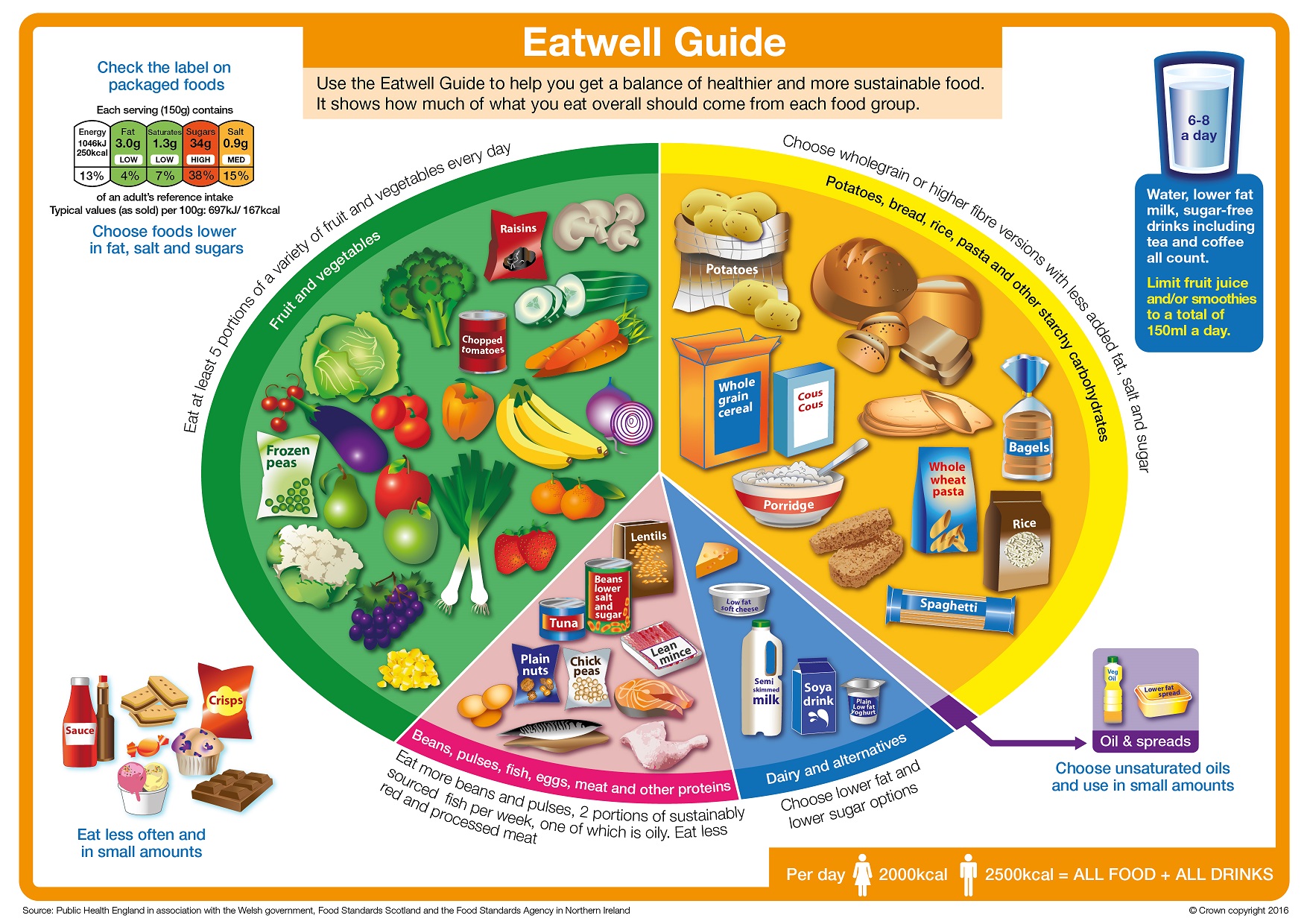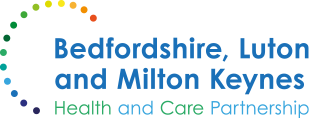Healthy Eating
Growing Healthily
Going through the teens and into adulthood comes with a tremendous amount of change. During your teenage years, you grow emotionally, functionally, and intellectually, developing a sense of independence, identity, and self-esteem. You also grow physically, increasing your need for calories and nutrients. Developing a positive relationship with food will go a long way in helping you to become the healthy, self-reliant adult you want to be.
Teenagers also tend to experience growth spurts, typically around the ages of 12 and 14 which may leave some people feeling unhappy with the way their body changes. However, it's helpful to take the focus off physical appearance and instead focus your attention on how you feel and the positive benefits you get from eating well and eating healthily.
Eating Healthily
Eating healthily means getting the right balance of nutrients. As you grow, you will need more calories and an increase of key nutrients including protein, calcium, and iron. How much you need to eat depends on your individual needs. But in general, the best way to maintain a healthy weight is to eat a balanced diet and exercise regularly. It's okay to have an alternative diet - such as vegetarian or vegan - as long as you're getting the nutrients you need. Some people also have diets that don't include dairy or wheat, for example, due to lactose intolerance or coeliac disease, which are managed through a specialist dietician.

Eating difficulties
Gaining weight when you are growing up is normal and everyone’s weight fluctuates over weeks and months. The important thing however, is to keep healthy. Lots of people worry about what they look like and from time to time might be unhappy with their weight or shape, but for someone with an eating disorder these thoughts and feelings can have a serious impact on their life. There is no one cause of an eating disorder. Young people who develop eating difficulties and disorders often use eating or not eating as a way of coping with feelings of sadness, anxiety and stress, which can affect the way we feel about ourselves.
There are many different types of eating disorders but they're all treatable and a full recovery is possible. If you're experiencing issues with eating, it's important to ask for help as soon as possible.
For more information on where to get help, click on the link to our Eating Difficulties page.
Here are the top ten tips to keep you healthy:
1. Eat three meals a day - breakfast, lunch and dinner: Don’t skip breakfast. By the time you get up, it’s been a long time since you last ate, so breakfast will give you the energy you need and help boost your concentration. Skipping meals causes the body to lower its metabolism (how much energy it needs to function). When the body runs out of the fuel we get from food, we feel tired and lethargic.
3. Grab your 5 a day: Eating at least five portions of fruit and vegetables will help keep your body healthy and ensure you get plenty of vital vitamins and minerals. Try to eat as many different types of fruit and vegetables – there are literally hundreds to choose from and loads of different way to cook and combine them (fresh, frozen, canned and dried all count).
4. Boost your iron: It’s important to eat lots of foods containing iron, especially for people who lose iron when they have their period. Iron makes red blood cells, which carry oxygen around the body. Sources of iron include red meat, eggs, wholegrains (such as wholemeal bread), iron-fortified breakfast cereals, dark green vegetables (such as spinach), beans and dried fruits (such as figs, raisins).
5. Healthy bones: Teenagers need high amounts of calcium to keep teeth and bones healthy. Aim to have 3 portions of lower fat dairy, such as semi-skimmed milk or low fat yoghurt, each day. (A portion would be 200ml of milk, 150g of yoghurt or 25g of cheese.) Other sources of calcium include white and brown bread, baked beans, dark green vegetables (such as broccoli) and oranges. Calcium-fortified dairy alternatives (particularly important if you are vegan or do not eat dairy products) include calcium-fortified breakfast cereals, fish that's eaten with the bones (such as whitebait, canned sardines or canned salmon).
6. Boost your energy levels: Carbohydrates, which include bread, rice, pasta, wraps, pitta, chapattis, pancakes, cereals and potatoes, foods provide your body with energy, so having a starchy choice at each meal will boost your energy levels.
7. Keep fit and strong: Aim to eat 2 portions of protein-rich food each day. This can be found in pork, beef, lamb, chicken, turkey, fish and eggs. Don’t eat some of those meats? Vegetarian? No problem, you can still get all the protein you need from beans, lentils and other ‘pulses’ and from vegetarian options like soya mince or Quorn products. Protein is needed for growth, development and repairing your body and, along with exercise, it can help you increase muscle strength.
8. Stay hydrated: Aim to drink 6 - 8 glasses a day to keep your body hydrated, preferably water and low-fat milk, especially when you're exercising. If you don’t drink enough, you might find it hard to concentrate, feel tired or get headaches. Unsweetened fruit juice should be limited to a small 150ml glass a day. Try to avoid too many sugars-containing drinks and energy drinks, especially between meals as they could harm your teeth.
9. Cut down on fast foods: Take-aways do give you energy, but they are typically high in fat, salt and sugar, and if you have too many then you’re more likely to put on weight. Even if you are a healthy weight, if you have too much fat and sugar you will be putting a strain on your body – even if you can’t see it and don’t feel it.
10. Snack sensibly. If you’re hungry between meals, go for healthier snacks such as fruit (fresh or dried), small handful of unsalted mixed nuts and/or seeds, low-fat yogurt, wholemeal pitta bread with lower-fat dips, for example reduced-fat houmous or salsa. The British Nutrition Foundation has lots more healthy snack ideas on their healthier snacking page.
Alongside a healthy diet, it also important to get in enough exercise. More information on exercise please click here.
For more information on nutrition and diet, please visit the Health for Teens website or The British Nutrition Foundation website.
healthy MEALS and snacks
Breakfast:
Healthy breakfast ideas include cereals (Weetabix, porridge, Shreddies etc), brown toast, a boiled egg, low-fat yoghurt with fruit, toasted teacake or crumpets, a fruit smoothie. Here are some more:
- Toast with peanut butter and chopped banana.
- Beans or scrambled egg on toast.
- Porridge with chopped banana or other fruit, such as blueberries.
- Overnight oats: Leave your oats to soak in milk overnight rather than cooking them in the morning. When you wake up, just add some fruit, such as banana or berries, or stir in peanut butter, chocolate chips.
- Easy peasy pancakes: Mix one egg with a mashed banana. Pour the mixture into a frying pan with a bit of marg or oil to stop it sticking. Cook on each side for a few minutes until cooked through. Put on a place and add an optional dollop of yogurt, a few grapes or berries, and a drizzle of honey. (Don't worry if it's not perfectly flat!)
Lunch:
- Pizza bagel : Cut the bagel in half, spread with your favourite sauce, grate some cheese on top and put under the grill until the cheese melts.
- Cheese on toast. You can switch the cheese out for eggs or sardines.
- Muffins with scrambled eggs.
- Pasta, tuna and sweetcorn: Cook the pasta and mix in the tuna and sweetcorn. Add some optional saladcream or mayonnaise.
- A sandwich: There's no end to what you can put in a sandwich - tuna, cheese, ham, salad.
- Hummus, pita and veggies: Chop your raw veg into sticks - try carrots, cucumber, celery or pepper - along with your pita and dip them into the hummus.
- Egg & tomato wraps: Spread one side of a tortilla wrap with soft cheese. Place slices of boiled egg, and tomato, along with some lettuce leaves across the middle of the wrap. Wrap/fold or loosely roll up tortilla wraps to enclose filling; cut into 3 or 4 portions, or eat whole.
- Baked potato with baked beans or grated cheese and a side salad.
SNACKS
- Rice cakes with cottage cheese or Marmite.
- A small bag of popcorn.
- Apple and celery sticks with peanut butter.
- A banana.
- Dried fruit such as apricots or raisins and a small handful of nuts.
- A hard boiled egg.

Healthy Recipe Ideas:
The sites below have some quick and easy recipe ideas. It doesn't matter if you don't have all the ingredients, you can always switch them out for something similar. For example, if you don't have cream cheese, use grated cheese instead. Or if you don't have rocket, use another leafy veg, like spinach or lettuce. Be imaginative and don't worry if things don't look the same as in the recipe photo! A useful tip is to keep tasting as you go along so you can adjust the flavour with an extra stock cube or a bit more spice.
Heart Matters: 25 easy recipes you can cook in 5 minutes or less.
NHS Healthier Family recipes: Healthy eating doesn't need to be dull!
BBC Good Food Easy Healthy Recipes: Some of these are slightly more advanced but not all of them. Don't worry if you don't have all the spices - just use what you have and taste it. Don't worry if you don't have the specified oil, such as rapeseed, any cooking oil will do.
What a balanced diet looks like:
The diagram below is a helpful guide to what a healthy balanced diet looks like.
Vegetarian diet: For vegetarians who eat dairy products and eggs, a healthy diet is the same as for anyone else, but without meat or fish. This link provides helpful information on what a vegetarian diet looks like and provides ideas for alternative sources of protein.
Vegan diet: A vegan diet is based on plants (such as vegetables, grains, nuts and fruits) and foods made from plants. Vegans do not eat foods that come from animals, including dairy products and eggs. This link provides information on how to eat well as a vegan.

Vitamins & Minerals:
Vitamins and minerals are nutrients your body needs in small amounts to work properly and stay healthy. Most people should get all the nutrients they need by having a varied and balanced diet, although some people may need to take extra supplements. Although there are many vitamins and minerals, here is a brief description of the main vitamins, what they're good for, and where to find them:
Vitamin A
Vitamin A has several important functions, including:
- helping your body's natural defence against illness and infection (the immune system) work properly
- helping vision in dim light
- keeping skin and the lining of some parts of the body, such as the nose, healthy
Good sources of vitamin A include: cheese, eggs, oily fish, milk and yoghurt
B vitamins and folic acid
Vitamin B1, helps:
- the body break down and release energy from food
- keep the nervous system healthy
Good sources of Vitamin B1 include: peas, some fresh fruits (such as bananas and oranges), nuts, wholegrain breads, liver
Vitamin C
Vitamin C has several important functions including:
- helping to protect cells and keeping them healthy
- maintaining healthy skin, blood vessels, bones and cartilage
- helping with wound healing
Good sources of vitamin C include: citrus fruit, such as oranges and orange juice, peppers, strawberries, blackcurrants, broccoli, brussels sprouts, potatoes.
Vitamin D
Helps regulate the amount of calcium and phosphate in the body. These nutrients are needed to keep bones, teeth and muscles healthy. The body creates vitamin D from direct sunlight on the skin when outdoors. From about late March/early April to the end of September, most people should be able to make all the vitamin D they need from sunlight. But between October and early March we do not make enough vitamin D from sunlight. Vitamin D is also found in a small number of foods.
Sources include: oily fish – such as salmon, sardines, herring and mackerel, red meat, liver, egg yolks, fortified foods – such as some breakfast cereals.
Vitamin E
Vitamin E helps maintain healthy skin and eyes, and strengthen the body's natural defence against illness and infection (the immune system).
Good sources of vitamin E include: plant oils – such as rapeseed (vegetable oil), sunflower, soya, corn and olive oil, nuts and seeds.
Vitamin K
Vitamin K is a group of vitamins that the body needs for blood clotting, helping wounds to heal. There's also some evidence vitamin K may help keep bones healthy.
Good sources of vitamin K include: green leafy vegetables – such as broccoli and spinach, vegetable oils, cereal grains. Small amounts can also be found in meat and dairy foods.
Calcium
Calcium has several important functions. These include:
- helping build bones and keep teeth healthy
- regulating muscle contractions, including your heartbeat
- making sure blood clots normally
Sources of calcium include: milk, cheese and other dairy foods, green leafy vegetables – such as curly kale, okra, bread and anything made with fortified flour, fish where you eat the bones – such as sardines and pilchards.
Iodine
Iodine helps make thyroid hormones, which help keep cells and the metabolic rate (the speed at which chemical reactions take place in the body) healthy.
Good food sources of iodine include: cows' milk and dairy products, eggs, sea fish, shellfish.
Iron
Iron is important in making red blood cells, which carry oxygen around the body.
Good sources of iron include: liver (but avoid this during pregnancy), red meat, beans, such as red kidney beans, edamame beans and chickpeas, nuts, dried fruit, fortified breakfast cereals.
Information taken from the NHS website: For more details visit NHS Vitamins and Minerals page



